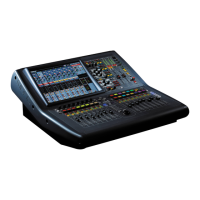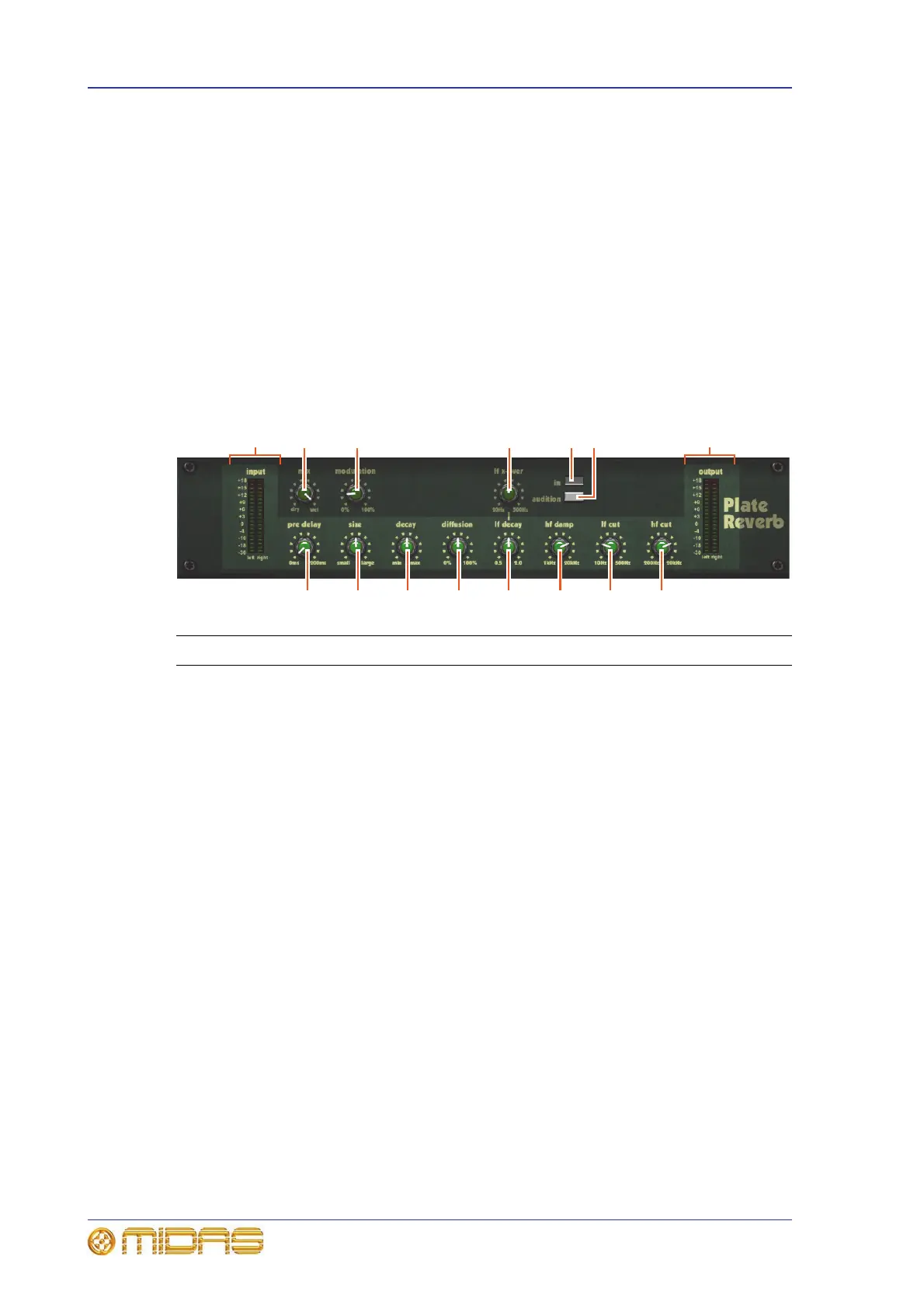148 Chapter 16: Internal Effects
PRO1 Live Audio System
Operator Manual
Plate reverb
The plate reverb effect simulates the actual plate reverb devices that were used in
studios in the 1960s and 1970s. They were literally a plate of metal that was
suspended under tension with a transudcer to transmit audio to the plate while two or
more contact microphones were attached to the plate to pick up the results. The plate
reverb has a very rapid build up of reflections and, as a result, is very dense initially
with a fairly smooth decay characteristic. For this reason it is typically the first reverb
choice for percussion instruments.
Reflective surface materials and air absorption properties can be simulated by adjusting
the high and low frequency cut amount and high frequency damping. Low frequency
decay and cross-over parameters allow relative control over the low band reverb tail
length. This can be used to either simulate real room responses, which often have a
longer decay time at low frequencies, or alternatively can be useful to reduce low
frequency energy in a live environment where it may already be present due to the
natural reverberation of the venue.
Item Element Function
1 input meter Two adjacent 11-LED columns — one each for left and
right — comprise the input meters.
2 mix control knob Adjusts the dry/wet signal ratio.
3 modulation
control knob
Specifies the combined rate and depth of modulation
applied the reverb tail.
4 lf x-over control
knob
Adjusts the cross-over frequency for the low
frequency decay, in the range 20Hz to 500Hz.
5 in switch Switches the Plate Reverb effect in/out.
6 audition button This momentary-action button triggers a short
internally generated sound to aid reverb evaluation
(as a check).
7 output meter Two adjacent 11-LED columns — one each for left and
right — comprise the output meters.
8 hf cut control
knob
High frequency cut control knob applies a 6dB/Oct
low pass filter to the input signal, in the range 200Hz
to 20kHz.
9 lf cut control knob Low frequency cut control knob applies a 6dB/Oct
high pass filter to the input signal, in the range 10Hz
to 500Hz.
10 hf damp control
knob
High frequency damping, progressively reduces the
high frequency content over time, in the range 1kHz
to 20kHz.
11 lf decay control
knob
Adjusts the ratio of decay for low frequency content,
between 0.5 and 2.0.
6
7
15 14 13 12 11 10 9 8
5
1
42 3

